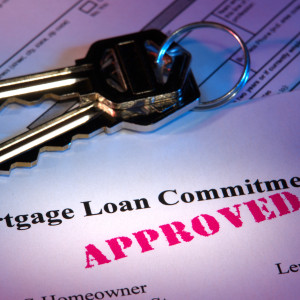When I worked in poverty programs for Mayor Michael Bloomberg in New York, one of the hottest anti-poverty ideas was something called “asset building and financial literacy.” The idea was to help low-income people who have trouble building up savings because they do not know how to budget their earnings and are unfamiliar with the practice of traditional banking. The Mayor’s office expended great effort setting up financial counselling programs that offered low-income people an opportunity to receive guidance on how to budget, save, and bank.
These efforts were well-intentioned, but they were small and very labor intensive. As I watched these programs develop, I noticed that they did not help very many people—and scaling them up so they could help more people would be difficult. All told, a few thousand people received financial counselling and the savings they were able to put away did not amount to very much.
Asset building programs get great press and strong support from traditional poverty fighters even though steady earnings from a job, publicly-provided health insurance, food stamp benefits, and tax refunds designed to boost earnings for low-wage workers are far more central to the financial health of most poor families than financial counselling and savings. That press and political support is, I guess, the result of being “new and innovative”—even if the programs themselves are small and not all that effective.
There is no question that asset building is good for low-income Americans and good for communities—and new efforts aimed at encouraging it should be explored. But this discussion too often ignores government policies that have hurt the ability of low-income Americans to build wealth—namely, housing policy.
In the years leading up to the financial crisis, the easing of lending standards drew many low-income and working-class families into homes they would not be able to afford if they suffered a significant economic setback. While analysts place different emphasis on who is most to blame, virtually everyone agrees that weakened lending standards contributed to the housing bubble, the financial crisis, the recession and the resulting financial ruin of countless families. The Washington Post recently captured the harm done to families and neighborhoods in a great three-part series documenting the damage sub-prime lending has done to largely black neighborhoods in Prince George’s County.
Home ownership can be a very good thing. But it must be done in a way that recognizes it is far from risk-free. That is why two recent contributions to the public dialogue are important. The first is the National Mortgage Risk Index (NMRI) developed by Ed Pinto and Steve Oliner, two of my colleagues at AEI. The NMRI tracks, in a comprehensive way, the extent to which government entities are backing solid loans—or falling back into the bad practices of the early 2000s.
The latest edition shows that the bad practices are coming back. It looks to me like politicians in Washington, from the left and the right, are feeling pressure from the housing industry (which needs a break-out year after several in the doldrums) and are permitting government housing programs to lower lending standards. The latest NMRI score was a series high – not as high as it would have been in the dark days of 2007-2008, but nonetheless inconsistent with sound lending practices. The NMRI estimates that if these current mortgages were subjected to stressful market conditions, nearly 12 percent would default. That is not a recipe for building wealth.
Unfortunately, I don’t think this trend is going to stop there. Many of the year-end economic round-ups suggest that the housing industry has not yet fully recovered from the recession, and many of the commentators added something to the effect that “this could be the year.” Well, be careful what you wish for—especially if the housing industry seeks growth through lowered lending standards for home mortgages instead of broader economic strength. The NMRI should be a key indicator of whether trouble is brewing.
It’s important to note that mortgage loans are not all the same. Some are much more risky than others. That’s why the other contribution of Pinto and Oliner—a new loan product designed to help people build equity more quickly and safely—is so important. Their Wealth Building Home Loan offers a 15-year term, allowing homeowners to build equity quickly. By directing down payment funds toward buying down the loan’s interest rate, the product offers substantially the same buying power as a traditional (and much more risky) 30-year mortgage. Some borrowers may be forced to scale back the price they pay for a home in a small way—but in return, those borrowers will be in a much safer position should the economy slow, putting their job or salary at risk, or should home prices fall.
Like any good man with a good idea, Pinto has been travelling around the country to convince bankers – and housing advocates – to adopt the Wealth Building Home Loan as a standard alternative to the traditional 30-year mortgage offered by most banks and backed by federal mortgage programs. Several institutions and organizations have taken him up on the offer. The Neighborhood Assistance Corporation of America (NACA), a nonprofit organization working in partnership with Bank of America and Citi, debuted the product last September and reports strong demand from its clients. Androscoggin Bank in Maine is now offering a version of the product, and a large regional bank will be rolling out its version soon.
Helping Americans build assets and own a home are good things for government to do – but only if it doesn’t expose borrowers to unneeded risks and costs that could destroy their financial security. Asset building and improving financial practices for the poor are trendy issues for the compassionate left. So too should monitoring lending standards for home mortgages and offering better, more affordable, and more dependable mortgages to Americans seeking to move up by buying a home.

